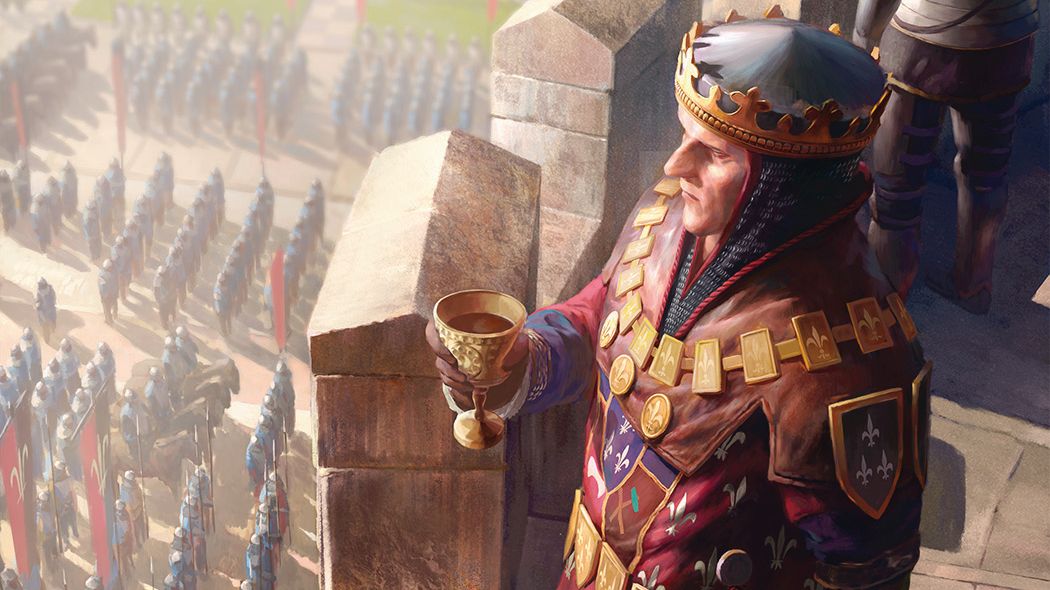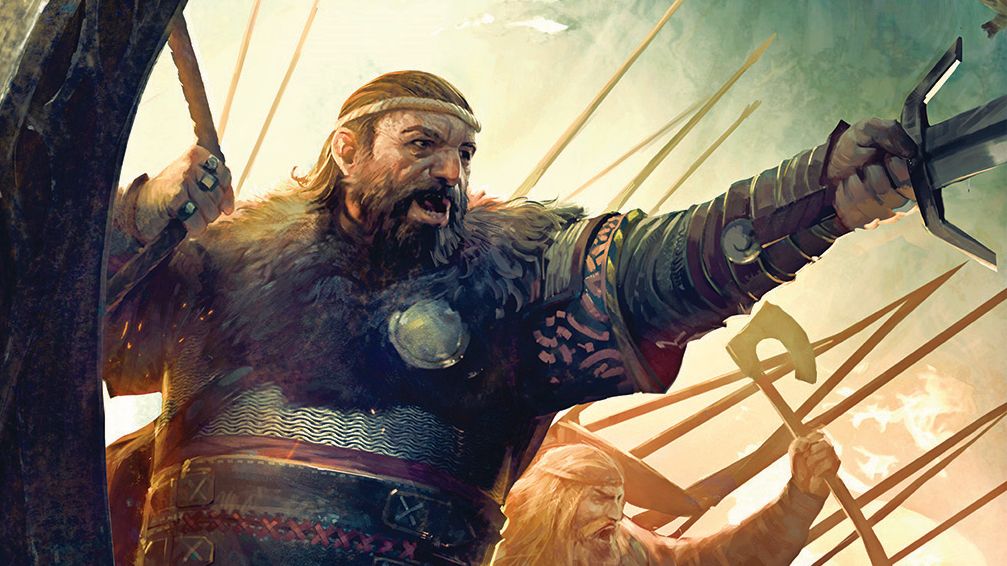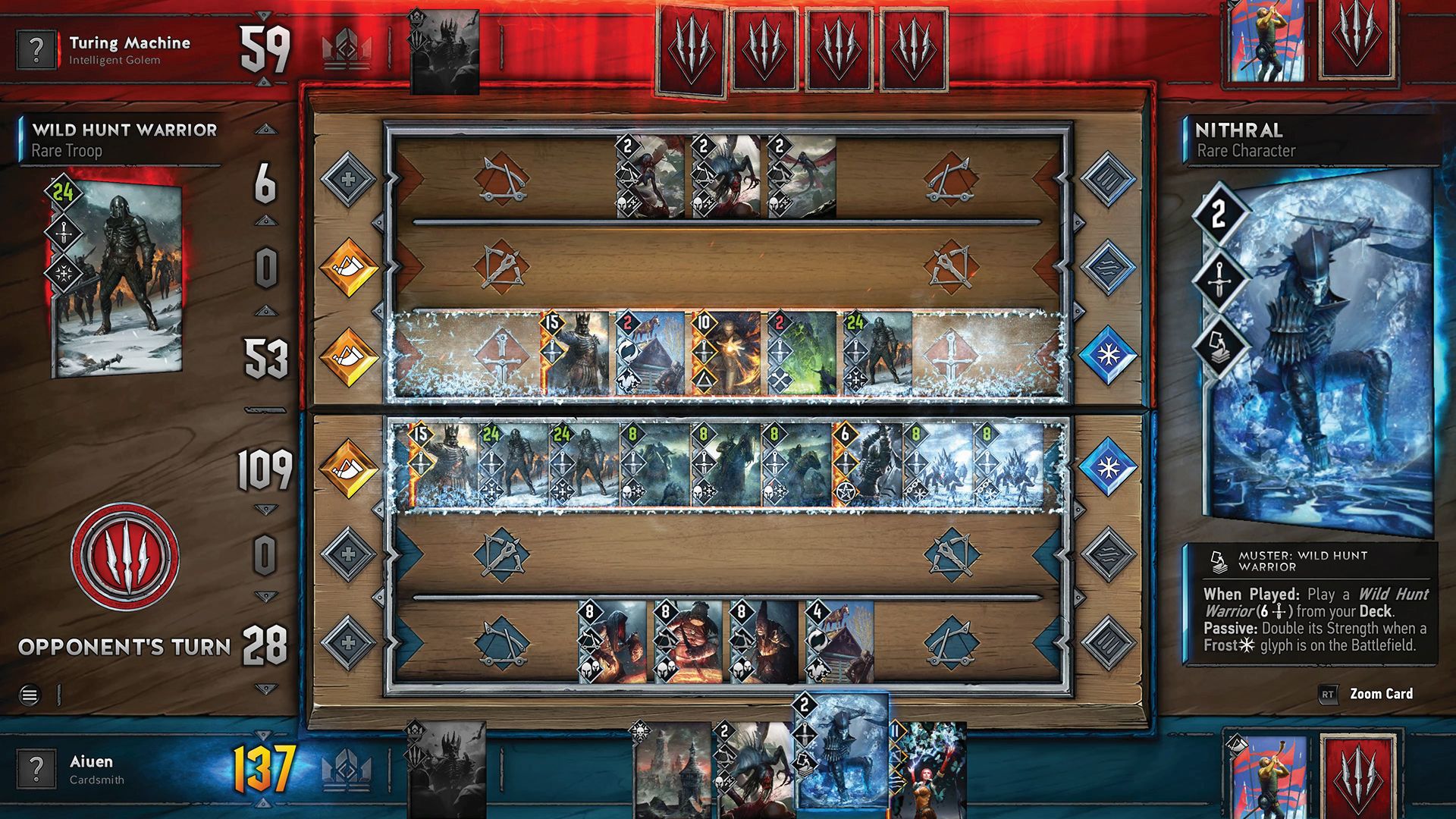Gwent preview: refined multiplayer, new cards and story-driven singleplayer
CD Projekt RED plays its cards close to its chest with Gwent.

By the sounds of it, these singleplayer campaigns are more likely to be set outside of the time and settings of the videogames than within them—it’s all about exploring areas that the writers have been dreaming about visiting since they read Sapkowski’s original books when they were younger. When I ask Tomaszkiewicz, he says there’s one particular story from the books he wants to do—he won’t say which one, but the memory of it sets him beaming.
From the tutorial section I saw, players traverse a Puzzle Quest sized world, encountering hard choices much as in The Witcher III itself. These stories don’t end well, for any character in them—each of which is represented as a card. As in The Banner Saga, some characters will have relationship problems with others—meaning that some cards are mutually exclusive.
Players traverse a Puzzle Quest sized world, encountering hard choices much as in The Witcher III itself.
“This exploration part is something that will take up a huge chunk of your time,” says Tomaszkiewicz. “You will be able to find the secrets in there, you will be able to explore it and you will be able to come back to places you visited before. If you want to explore further, while exploring you will find different items, you meet different characters that will join your army and maybe sometimes those characters will unlock some options in this story, in the main story.”
For example, in the tutorial campaign the team demonstrated to me, I followed the story of a young baroness whose father had been foully murdered, and whose guardian Falibor and his men are seeking to get her to the safety of a nearby town—with the aid of Geralt. After leaving the initial area, Geralt is free to lead the party throughout the wood, interacting with locations if he chooses to do so.
Interaction isn’t always the best option though—this is the world of The Witcher, after all. Many locations only hold peril, and the choice to interact with it can prove disastrous. In the tutorial, Falibor dispatched advance scouts to find a path through the wood, and none of these returned. One scout is later found near a giant pile of bones “out of his mind after what he saw,” I’m told by Tomaszkiewicz. “It’s very hard to communicate with him and basically you have to decide, would you like to take him with you or send someone to escort him out the way you came in. It has consequences later on.” Similarly, the plot of Falibor and his ward has a gruesome, dark denouement—signalling that this is still the Witcher universe and that happy endings only happen in fairy tales.

The White Wolf’s presence in this tutorial is an exception. “Geralt is not the main protagonist of these stories, but he will appear from time to time because he is such an important character in the Witcher universe.” Indeed, Falibor is the leader in the game’s tutorial battles.
The full Northern Realms campaign is going to take ten hours to play, the implication being that you’ll be a military leader, as in King of Dragon’s Pass. “It’s a different kind of story,” Tomaszkiewicz says. “The character leading an army has to face a different kind of choice and different kinds of situations than in The Witcher. At the same time, we want to show personal stories, which is not easy to do when you have a story about a character leading an army.” Each faction will have its own campaign, of a similar length, totalling at least 50 hours for the first five factions. The Scoia’tael might track the decline of the Elves, the Monsters might track the Wild Hunt, and so on. These stories may ultimately be linked by a larger narrative, but that’s still to be decided.
The biggest gaming news, reviews and hardware deals
Keep up to date with the most important stories and the best deals, as picked by the PC Gamer team.
The multiplayer side of Gwent is targeted at an entirely different market: the Hearthstone crowd, and that’s reflected in the divide between the cards. The cards you’ll be playing with in the singleplayer game come and go as characters join and leave your army, but the multiplayer deck builds separately. The team estimate there are 150-200 cards in-game at this stage, with many more being worked on.
Though it’s all tentative at the moment, there’s an inkling of how CD Projekt Red are going to make money out of all this. The singleplayer campaigns are going to be premium purchases within the free-to-play game. Players will also be able to buy card packs, which are guaranteed to give you a rare or higher card from a selection of three, plus four other completely random cards.
And if you don’t want to spend any money? You’ll be able to acquire card packs by levelling up, with resources dropping at particular points. Lee’s aim is to have a daily quest system where winning three games a day will also win you a card pack. “We want it to be a challenge to collect all the cards,” he says. Expansions might have their own card packs, too.
Most striking, though, are the Premium cards. These are special versions of normal cards. Some have a mock holographic effect—as you rotate them, they move. Others are just rendered scenes that you can see from different angles. Others have full ongoing animations—for example, Vernon Roche’s card has him jumping at an arrow hitting a tree next to him, whilst the Giant Toad’s tongue undulates grotesquely. All of them are a joy to look at.

“We wanted to do something special for everyone, because vanity is important in videogames,” associate art director Kasia Redesiuk tells me. “Doing my research I came across a very silly gif of a cat, which had a stereoscopic effect, and I thought ‘this is it, my epiphany, whilst looking at cats on the internet.’ Unfortunately, there’s no cats in the game, but I’ve been promised a crazy cat lady card.” A second epiphany came when they realised they could animate the cards, making them “a window into the Witcher universe.”
The closed beta is due to come out on October 25, but the CD Projekt Red team are loathe to commit to public deadlines beyond that—and they point out that Hearthstone spent four years in effective beta. They do promise that there will be more game modes and more factions one day—but no guarantee when that will be.
My biggest concern about Gwent was something I felt about the original game: that the decks are too heavily directed towards certain playstyles, rather than giving players a remit to experiment. Unlike Hearthstone, none of the neutral cards are plain troops. This means that, while every faction’s basic cards behave differently, the majority of the high tier cards are shared. That’s where the experimentation will come, which is essential for making this a successful collectible card game.
Yet, if that works, Gwent could be a package better than anything since the Orange Box. We’ll get to explore more of the Witcher world—at least 50 hours of it—in the company of a rogue’s gallery of the universe, with the characteristic choice and consequences playing throughout. And on the side, we’ll get a top-notch multiplayer card battler, costing nothing. That’s one hell of a heritage for an afterthought.

